Many new homeowners find themselves wondering what to pave their driveways with and how to improve the aesthetics of that area. One solution is to have a stone lined driveway designed and managed by your Architect.
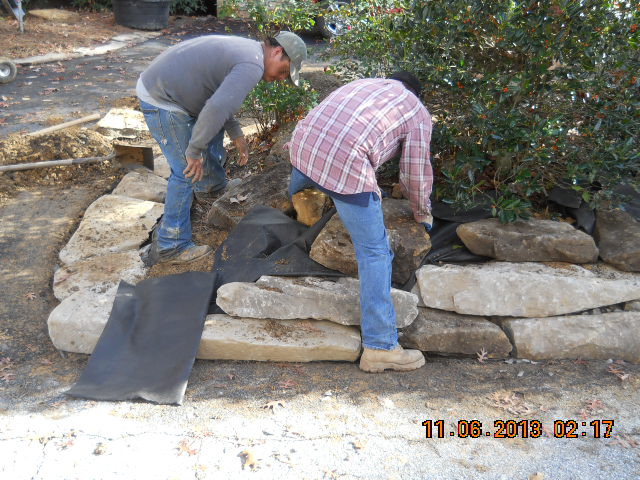
While many people might prefer to have a flagstone driveway, this is very expensive. Why? Because the stones need to be 5″ to 7″ thick, and very large (= heavy) to look correct and give the proper functional and aesthetic benefit. Also, other people may opt for a high-density concrete brick paver surface, which can also be much more expensive than say: gravel or asphaltic concrete (“asphalt”).
While some few people go with gravel, they find that after the snow, ice and rain require it to be regraded and regraveled about the 4th time or so, the money they are spending on that maintenance could have been used to pave it. The option used by most people is asphalt (asphaltic concrete). Asphalt paving delivers a reasonable cost for a reasonable price. However, many people feel that it is not particularly handsome in appearance, starting out being almost midnight black, then weathering to a medium gray over the years. By itself, not exactly the most attractive material or treatment.
So, what can be done to improve the driveway area, in a permanent manner at a reasonable additional cost? One such answer: adding flagstones along the sides of the driveway and around any landscaped “islands” in the paved surface. The stones can frame the paving so the eyes are drawn to the edges, where the rustic stones offer a more “mountain style” appearance up against the asphalt. So, for an expenditure much less than having your entire driveway being made of thick flagstones, you can get a bit of the feel.
How is this accomplished? While there are a number of methods, this one was created by the HOME ARCHITECTS ®, one of the leading mountain style residential firms in the USA:
1. Have the stones delivered. Have them be about 18″ in minimum width x whatever length x 3″ to 4″ thick. Note: this is NOT thick enough if you intend on driving on them (see above for that). Cost and labor are a factor here. ALL of these rocks will be VERY heavy.
2. Rake or power air-blow any existing ground cover (like pine needles) back from the area to receive the stones.
3. Dig down into the ground along the edges of the asphaltic concrete pavement the depth of the stones, so that the stone will lie approximately level with the pavement. This will ADD additional surface area to the driveway and walking area, and allow vehicle doors to swing over the flagstones, rather than bumping into it. This provides a functional expansion of the driveway area.
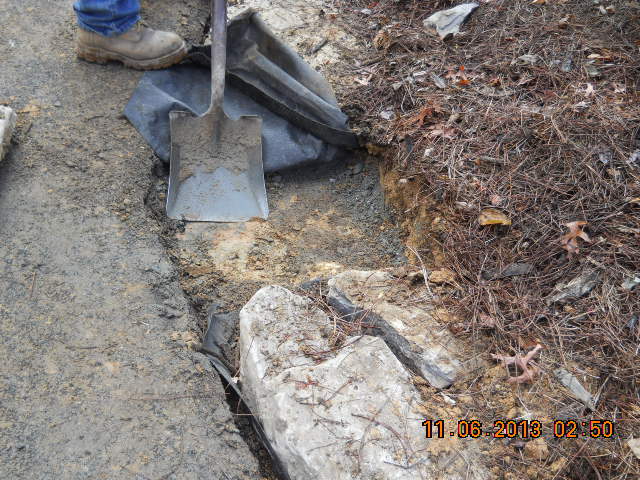
Click on image above to see Mountain Home Plans.
4. Install a layer of synthetic shade cloth, available from many building and garden wholesale warehouses. This fabric is often dark grey in color and helps prevent sunlight from getting to the ground below, preventing weed growth from occurring between the stones and between the stones and driveway edge. Before doing this, you may wish to consider having a professional company spray the excavated ground with herbicide to further prevent weed growth. Be careful and use protective clothing to prevent contamination with any toxins.
5. Install the stones, flat, over the excavated shallow trenches. It is better if you hire young, strong people to do this rather than hurting your own back, hands and arms. These stones can be extremely heavy and if you drop one or shift one, it would be easy to smash body parts. Pay someone else to save yourself the pain and sweat. Install the stones as close together and as close to the pavement as possible. The stone installers may need to use a sledgehammer to “trim” the stones to be more flat to each other. Make sure that whomever is doing this and anyone around them is wearing eye protection from flying stone chips, which could blind someone. Install the stones to yield about an 18″ wide strip of rock “trim” along the edge of the pavement. Provide leveling rocks to make the stones lay flat, as required.
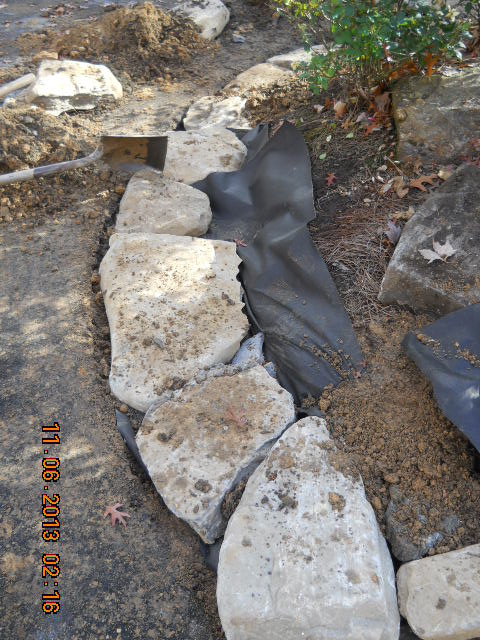
Click image above to see index for Green Home Architects.
6. If you have any areas where you want or need some boulder landscaping walls, perhaps to hold in some soil around a rise in the earth as a planter, carefully rack back each course of rock into the soil. Use the filter fabric/shade cloth behind it to keep dirt from washing through the rocks. If you intend to do much of this (more than a couple of feet), then you should engage a licensed professional structural engineer to design a boulder retaining wall, as this becomes a more significant issue regarding overturning and drainage and should also then have a foundation. Each course of stone should have the rocks from the next course approximately halfway over the joints below to hold together better and look like legitimate stone masonry.
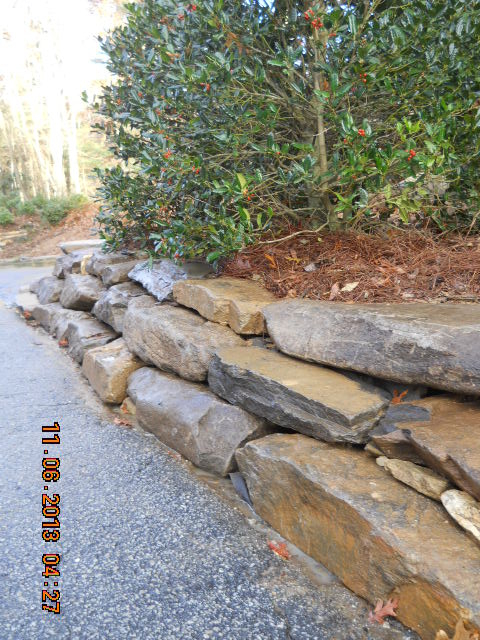
Click image above to see Stone Castle Home Design.
7. Install some smaller gravel like limestone, granite or marble or whatever size appeals to you. You may wish to use pebbles of a shade close to the rock, or you may prefer a contrast. In the example used here, many of the large boulders/flagstones are Tennessee sandstone (which often exhibit a beige coloration), with granite gravel, which are more dark grey with white streaks and are much smaller. The idea is for the gravel to fill the space between the flagstones and the pavement, so that dirt, debris and weeds can’t fill that, and to look more finished.
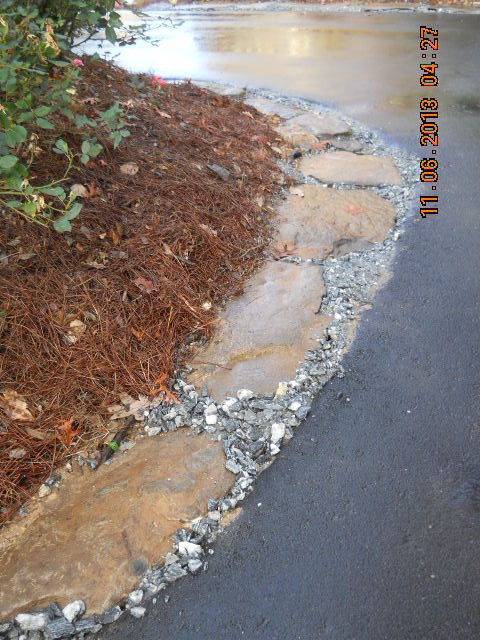
Click image above to see the Contact-Us form for the Architect.
8. Using a garden hose with a sprayer nozzle, clean the pavement of the dirt and marks (there will be many) and also carefully water in the gravel joints, consolidating the gravel and cleaning the flagstones. You may need to do this a couple of times before things look clean and finished to your satisfaction.
To have a professional Architect design & manage a project like this for you, contact:
Rand@HomeArchitects.com 828-269-9046
www.HomeArchitects.com
tags: stone lined driveway, custom, cashiers, highlands, atlanta, hendersonville, newnan, timber, post and beam, orlando, asheville, aspen, telluride
